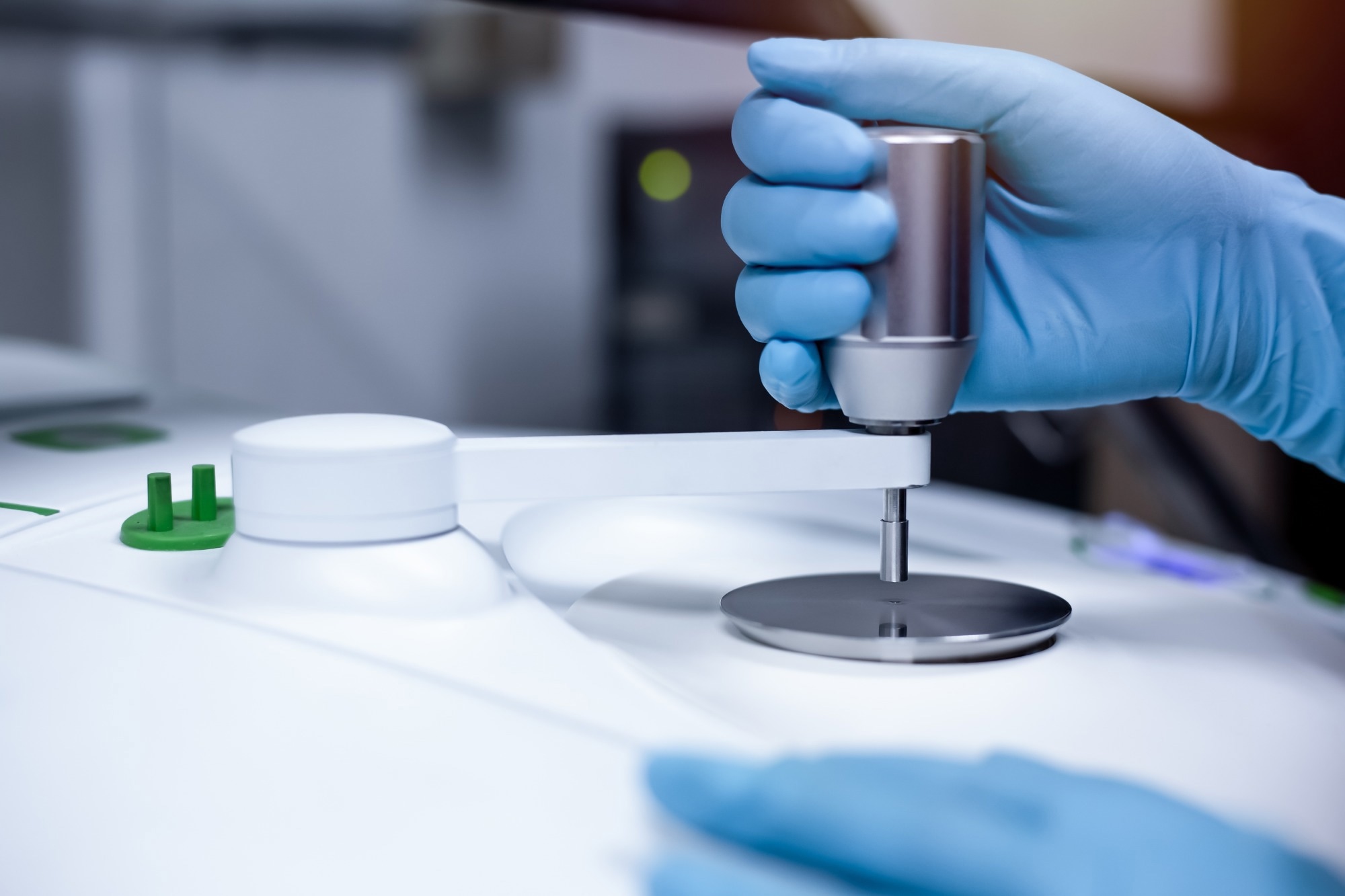 By Muhammad OsamaReviewed by Lexie CornerMay 30 2025
By Muhammad OsamaReviewed by Lexie CornerMay 30 2025A recent study published in Small investigated how altering the surface charge of covalent organic frameworks (COFs) affects platinum (Pt) photodeposition and photocatalytic hydrogen evolution.
The researchers introduced a method of modifying linkage chemistry to influence charge interactions and catalytic performance. This work contributes to ongoing efforts to optimize COF-based systems for hydrogen production.
 Image Credit: S. Singha/Shutterstock.com
Image Credit: S. Singha/Shutterstock.com
The Role of COFs in Hydrogen Evolution
COFs are considered promising materials for photocatalytic hydrogen evolution reactions (HER) due to their ordered porous structures, chemical stability, and adjustable optoelectronic properties. Their structural flexibility at the molecular level enables fine-tuning of light absorption, charge separation, and catalytic behavior.
These properties position COFs as candidates for hydrogen generation via photocatalytic water splitting. However, the effect of surface charge on interfacial behavior and co-catalyst deposition—particularly for metal catalysts like Pt—remains an area requiring more investigation.
Investigating COF Modifications and Their Effects
In this study, the researchers developed a thiophene-based COF system where imine linkages were converted to amide linkages through Pinnick oxidation using sodium chlorite. This transformation modified the framework’s surface charge and impacted its photocatalytic function.
Two COF variants were synthesized: Imine-BDT-ETTA and Amide-BDT-ETTA. The imine-linked framework was formed via a solvothermal reaction between benzo[1,2-b:4,5-b']-dithiophene-2,6-dicarboxaldehyde (BDT) and a tetra-amine-functionalized tetraphenylethylene (ETTA) unit. Post-synthetic oxidation converted the imine bonds to amide linkages, yielding a structure with different protonation properties.
To verify the structural and electronic changes, the materials were analyzed using powder X-ray diffraction (PXRD), nitrogen physisorption, Fourier-transform infrared (FT-IR) spectroscopy, solid-state nuclear magnetic resonance (NMR), and zeta potential analysis.
Photocatalytic hydrogen evolution was measured under visible light (λ > 420 nm, 100 mW cm⁻²) to assess the effect of linkage conversion on Pt photodeposition and catalytic performance.
Enhanced Photocatalytic Performance
The transformation from imine to amide linkages significantly improved hydrogen evolution performance. The Amide-BDT-ETTA COF reached a HER rate of 0.95 mmol g⁻¹ h⁻¹, which was over 300 % higher than that of the Imine-BDT-ETTA variant (0.22 mmol g⁻¹ h⁻¹).
Zeta potential measurements showed that the imine-linked COF carried a positive charge under acidic conditions due to protonation, whereas the amide-linked COF had a negative surface charge.
This shift in electrostatics influenced Pt deposition: the imine-linked COF favored the formation of small (1–2 nm), uniformly distributed Pt nanoparticles, which can support efficient electron transfer.
In contrast, the amide-linked COF produced larger Pt particles (up to 100 nm). While these larger particles may reduce electron mobility, they are proposed to improve the kinetics of the Volmer step in HER.
The amide-linked framework also showed increased hydrophilicity, attributed to polar carbonyl groups, which likely improved water interaction and dispersion in aqueous environments. Additionally, improved light absorption and charge separation efficiency further contributed to its enhanced performance.
Applications in Sustainable Energy and Photocatalysis
The study demonstrates that modifying the linkage chemistry of COFs alters their surface charge and affects metal co-catalyst deposition, offering a strategy to control photocatalytic behavior.
Such electrostatic tuning may be applicable not only to HER but also to other photocatalytic processes, such as CO₂ reduction or organic pollutant degradation.
The inherent tunability of COFs allows for the rational design of photocatalysts suited to various energy conversion and environmental applications. Tailoring linkage types and interfacial properties provides a route to customize catalysts for specific performance goals.
Download your PDF copy now!
Conclusion and Future Directions
This research underscores the role of surface charge modulation in influencing the photocatalytic properties of COF-based hydrogen evolution systems. Converting imine to amide linkages enhanced structural stability, modified charge behavior, and enabled more effective Pt photodeposition, contributing to improved hydrogen generation rates.
The findings support the use of linkage chemistry as a method for controlling interfacial electronic properties and catalytic behavior. Future work could explore additional linkage types, charge-transfer pathways, and functional group modifications to further enhance photocatalytic performance.
As interest in clean energy technologies grows, continued research into COF design, including integration with other materials and optimization of surface chemistry, may facilitate the development of more efficient and robust systems for photocatalysis, carbon capture, and environmental remediation.
Journal Reference
Paliušytė, K., et al. Surface Charge Modulation in Covalent Organic Frameworks for Controlled Pt-Photodeposition and Enhanced Photocatalytic Hydrogen Evolution. DOI: 10.1002/smll.202500870, https://onlinelibrary.wiley.com/doi/10.1002/smll.202500870
Disclaimer: The views expressed here are those of the author expressed in their private capacity and do not necessarily represent the views of AZoM.com Limited T/A AZoNetwork the owner and operator of this website. This disclaimer forms part of the Terms and conditions of use of this website.